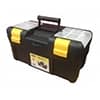As the most famous marching song in history, It’s a Long Way to Tipperary will forever be linked with World War I and images of thousands of brave British soldiers mobilising for war.
An amazing six million copies of the song were sold after two separate recordings were made by Irish tenor John McCormack and popular singer Billy Murray - both in 1914. The song is universally known and even German soldiers used to sing their own translated version during the Great War.
Not a typical war song, in that it isn't a fighting anthem that incites the soldiers to carry out deeds of bravery; instead, it concentrates on the Armed Forces' longing for home, in the same vein as songs such as Keep the Home Fires Burning.

Credit: Wikipedia
Origins
It’s a Long Way to Tipperary is written from the point of view of a young Irish man, thinking fondly of his sweetheart back in Ireland.
It was co-written by Henry "Harry" Williams and Jack Judge in 1912 as a music hall song. Judge was a 40-year-old established music hall entertainer and song writer whose parents were from County Mayo in Ireland.
Born in Aston, Birmingham, 39-year-old Williams was the son of a publican. In his youth, he fell down the cellar steps and broke both legs so badly that he was disabled for the rest of his life. In his adolescence, he studied music and poetry, later becoming a pianist.
Judge and Williams met at the Malt Shovel pub in Oldbury, where Williams' brother Benjamin was a licensee. Judge was performing in the music hall at the time. The duo began song writing together and wrote a multitude of songs, their most famous being It’s a Long Way to Tipperary.
Lyrics
The lyrics didn't specifically describe a young man going to war, but rather one who had gone to London, where the "streets were paved with gold". However, he was missing home and his sweetheart so much that he decided to head back to Tipperary, hence the words, "Goodbye, Piccadilly, Farewell, Leicester Square!"
Accompanied by the American Quartet, Murry sang it as a straightforward march, complete with drums, brass and cymbals.
It was reportedly used as a marching song for the first time on 13th August 1914, when George Curnock, war correspondent for the Daily Mail, witnessed Irish regiment the Connaught Rangers singing it as they marched through Boulogne.
Once it had been recorded, it gained international popularity and was soon picked up by other British Army regiments, who used it as their marching song. A great morale booster, it became the most popular song among the soldiers during World War I.
Young men going off to war often sang It’s a Long Way To Tipperary in tandem with another popular song, Pack Up Your Troubles in Your Old Kitbag, written in 1915 by Welsh brothers George and Felix Powell.
Williams later donated a large sum from his royalties to help those who were wounded during the war.
Author HG Wells called World War I the "war to end all wars", as he hoped the unparalleled scale of destruction would mean future governments would never go to war again over a political dispute. Alas, this was not to be.
Solent Plastics will be joining thousands of people across the UK to honour those brave men and women who lost their lives during the World Wars, so that we might live in freedom. Their sacrifice must never be forgotten.





























































